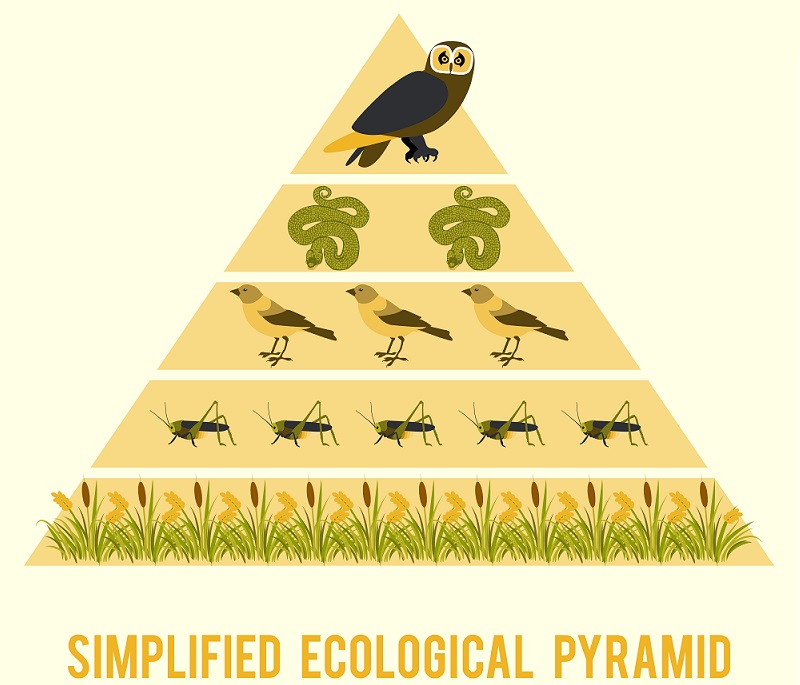[LS2-4] Matter and Energy Flow Mathematics
This standard focuses on the various mathematics tools scientists can use to measure and analyze the flow of energy and quantify the cycles of matter within an ecosystem.
Resources for this Standard:
Here’s the Actual Standard:
Use mathematical representations to support claims for the cycling of matter and flow of energy among organisms in an ecosystem.
Standard Breakdown
Here are some common ways to show mathematical representations of how matter and energy are cycled through an ecosystem:
Measuring Light Output vs Biomass Creation
This can be on a global or individual organism scale, depending on what route works best for students to explore. From an individual organism standpoint, we can actually measure how a plant creates biomass and decreases the amount of carbon dioxide in a sealed chamber.
This mathematical relationship can be shown graphically, and can even be demonstrated experimentally by obtaining the dry weight of plants at different life cycles. Though the experiment goes with common sense (older plants weigh more), the results can lead to a clear mathematical relationship showing how carbon dioxide is stored in the tissues of plants as they grow, leading to a higher weight.
Feed Conversion Rates
In the agricultural industry, one of the most important measurements for both plant and animal farmers is how efficiently the organisms they are raising can convert food and nutrients into new material. In plants, this is essentially a measure of how much fertilizer farmers put on their crops and how much they grow.
In animals, the measurement is much easier to calculate. If a pig eats 40 lbs of food and gains 4 lbs of weight, it has a 4:1 “feed conversion ratio”. In essence, this shows that only a minority of matter taken in is actually incorporated into growth at the next level. However, what the pig doesn’t eat will likely be utilized by decomposers. This shows, in very clear mathematical terms, how matter (and energy) move through the environment.
The Ecological Pyramid
The same concept is demonstrated by an ecological pyramid, which shows the biomass of different trophic levels in an ecosystem:

Essentially, because we know that the bottom levels of the pyramid hold only so much energy and each level can only utilize so much energy from the level below it, the top of the pyramid must have much less biomass than the bottom of the pyramid. In fact, the reason that apex predators are typically very important when scientists are analyzing an ecosystem is that healthy populations of apex predators depend on many levels of energy flow and matter cycling below them.
A little clarification:
The standard contains this clarification statement:
Emphasis is on using a mathematical model of stored energy in biomass to describe the transfer of energy from one trophic level to another and that matter and energy are conserved as matter cycles and energy flows through ecosystems. Emphasis is on atoms and molecules such as carbon, oxygen, hydrogen, and nitrogen being conserved as they move through an ecosystem.
Let’s look at this clarification a little closer:
Stored Energy in Biomass
In biology, energy is stored in bonds of various molecules needed to create and maintain cells. In turn, this allows organisms to grow and reproduce. Primary produces (plants in terrestrial environments) store energy from the sun. This energy is then transformed and stored in many different bonds. However, at each trophic level, at least some of the energy is not recaptured in new bonds and is instead lost as heat or waste. This creates trophic levels that decrease in biomass at each higher level.
Conservation of Matter and Energy
Physics tells us that energy cannot be created, nor destroyed, but can go through transformations as it moves through different substances and takes different forms. Just as combustion (fire) releases the chemical energy bound in a substance, most consumers release the chemical energy bound in sugar or more complex molecules in order to maintain their bodies and reproduce. The energy is not destroyed, simply released. Some of it is used to create new bonds, while some of it is lost as heat.
The same applies to matter. Many different atoms – you can see the list in the clarification – move from the environment, into organisms, and back to the environment in large, complex cycles. Though carbon forms the backbone of most organic molecules used by organisms, the other molecules are also very important.
What to Avoid
This NGSS standard also contains the following Assessment Boundary:
Assessment is limited to proportional reasoning to describe the cycling of matter and flow of energy.
Here’s a little more specificity on what that means:
Proportional Reasoning
Proportional reasoning here means students should be able to think about different trophic levels in terms of the percentage or proportion of biomass they obtained from the trophic level below. Any formula derivations or algebraic analyses are beyond the scope of this standard.
